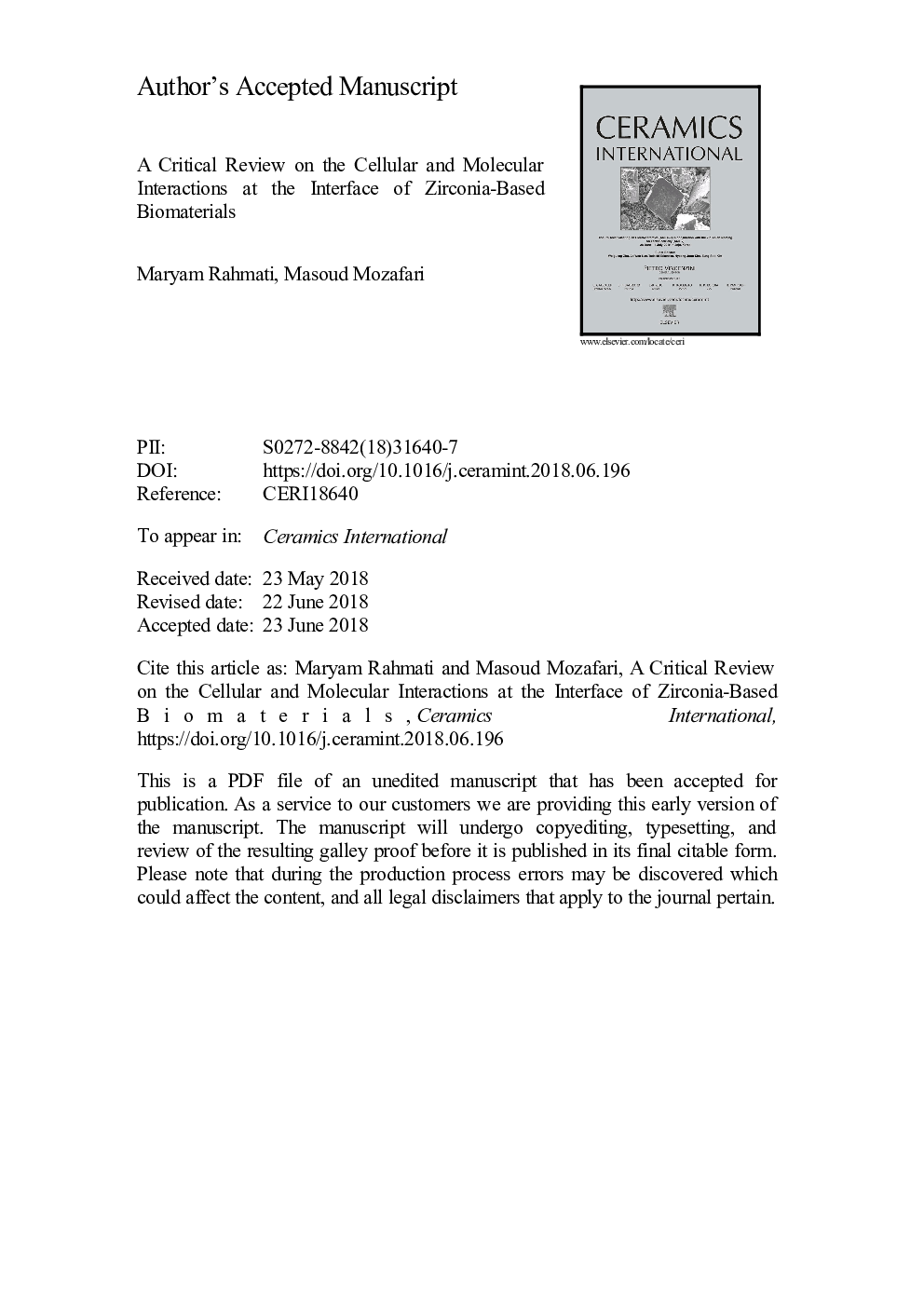| Article ID | Journal | Published Year | Pages | File Type |
|---|---|---|---|---|
| 7885735 | Ceramics International | 2018 | 54 Pages |
Abstract
In the past few years, zirconia has gained a great attention among biomedical scientists due to its extraordinary strength and fracture toughness, negligible thermal conductivity, good biocompatibility and chemical inertness. In this regard, there is still room for the manipulation of zirconia-based biomaterials regarding the protein adsorption and subsequently cell responses to the surface. Protein adsorption on biomaterials surfaces start interpreting the construction and also arranging the surface characteristics into a biological language. In this review, the role of adsorbed proteins as key players in starting interactions between cells and zirconia-based biomaterials will be discussed in detail. The discussion will then highlight discussions on the implementation of innovative strategies to engineer the physiochemical properties of this class of biomaterials. It is expected that these promising solutions can better control proteins adsorption and cellular functions after implantation in the body.
Keywords
AFMPSZHGFsTHRPMNsHBSDCsFPDsECMFACALB3,4-dihydroxy-l-phenylalanineBSAl-DOPASiEAlbuminbovine serum albuminAluminaUltravioletTemBioceramicsBiomaterialstotal hip replacementsBiocompatibilityHeparin binding siteDendritic cellsHuman gingival fibroblastsFibrinogenExtracellular matrixFocal adhesion complexHIPTissue engineeringTransmission electron microscopyatomic force microscopyHot isostatic pressingFixed partial denturesPolymorphonuclear
Related Topics
Physical Sciences and Engineering
Materials Science
Ceramics and Composites
Authors
Maryam Rahmati, Masoud Mozafari,
